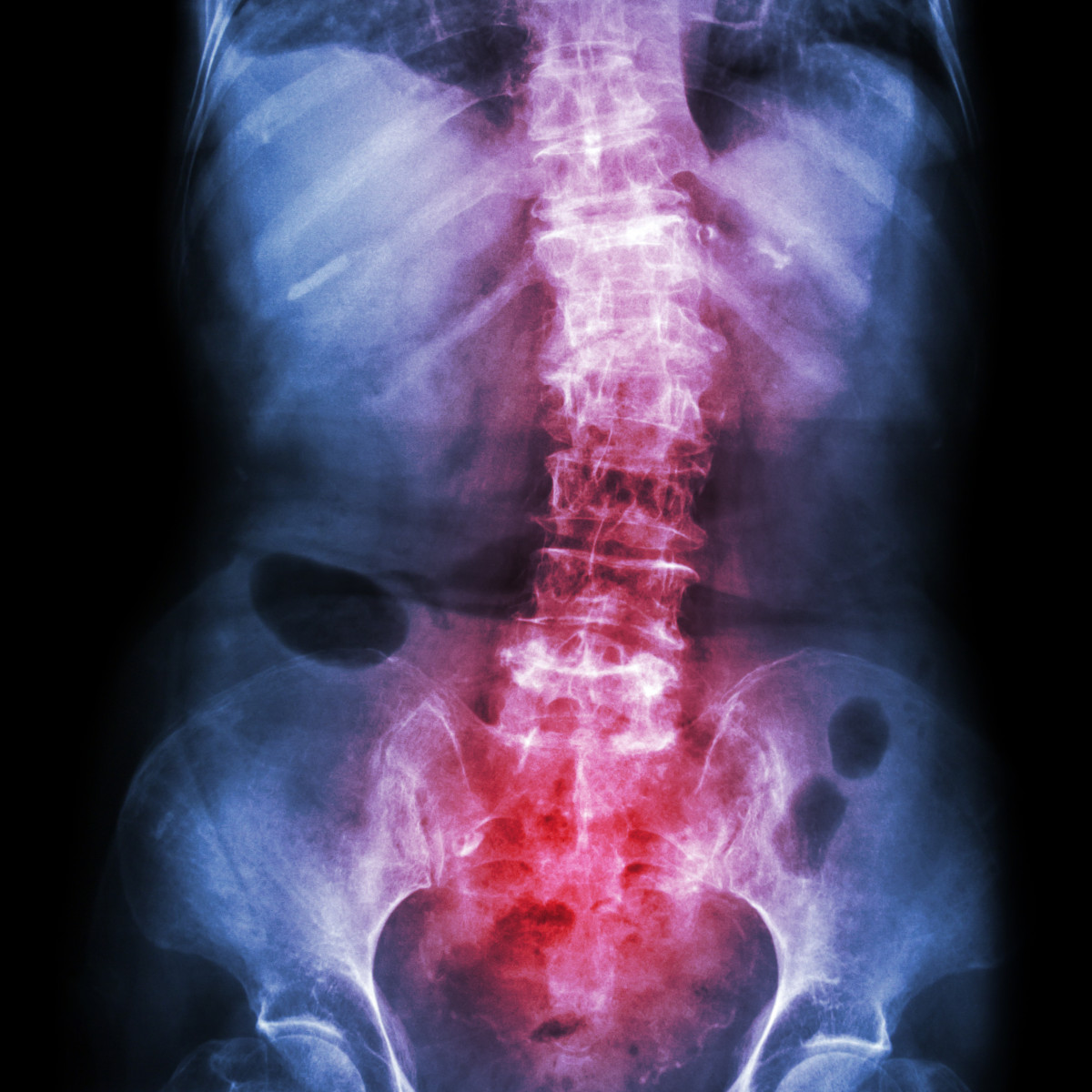Xeljanz Reduces Spinal Inflammation in One-third of AS Patients, Phase 2 Trial Shows

Treatment with Xeljanz (tofacitinib citrate) led to a clinically meaningful reduction in spinal and sacroiliac joint inflammation in approximately one-third of ankylosing spondylitis (AS) patients taking part in a Phase 2 clinical trial.
The study, “Tofacitinib is associated with attainment of the minimally important reduction in axial magnetic resonance imaging inflammation in ankylosing spondylitis patients,” was published in the journal Rheumatology.
Pfizer‘s Xeljanz is approved for the treatment of moderate-to-severe rheumatoid arthritis and ulcerative colitis, as well as active psoriatic arthritis.
The therapy is a small-molecule inhibitor of Janus kinase (JAK), an enzyme with an important role in the activation of inflammatory mediators. Primarily by disrupting JAK-mediated cell signaling, Xeljanz can provide relief of inflammatory symptoms.
The double-blind Phase 2 study (NCT01786668) investigated whether Xeljanz was effective and safe for adults with active AS, while also assessing the best treatment dose.
A total 207 patients were randomly assigned to receive either a placebo or Xeljanz in doses of 2 mg, 5 mg, or 10 mg twice daily over 12 weeks. A four-week follow-up period was also included after the end of treatment.
The study’s primary objective was to analyze patients’ response rate at week 12 using the Assessment of SpondyloArthritis International Society 20% improvement (ASAS20), which refers to a 20% improvement/reduction in four domains: patient global assessment of disease, pain, function, and inflammation.
Prior results showed that 80.8% of the patients receiving 5 mg of Xeljanz reached an ASAS20 response, which was significantly higher than the 40.2% proportion seen in the placebo group.
The study’s second goal was to analyze how patients improved with the treatment. The researchers measured changes in disease activity using the Spondyloarthritis Research Consortium of Canada (SPARCC) magnetic resonance imaging (MRI) index, a measure of sacroiliac joint inflammation in patients with AS.
The index contains a 72-point scale for sacroiliac joints — those that connect the spine to the pelvis — and an 18-point scale for the spine, with higher scores indicating greater inflammation. Minimally important changes have been defined as a change not inferior to 2.5 points for sacroiliac joints and 5 points for the spine.
The researchers determined the proportion of patients achieving such minimally important changes, and assessed whether they correlated with clinical improvements. In total, they analyzed 164 patients: 42 patients (mean age of 41.1 years) received 2 mg; 44 patients each received 5 mg (mean age of 41.2 years) or 10 mg (mean age of 39.5 years); and 34 patients (mean age of 41.5 years) were on a placebo.
At 12 weeks and regardless of dose, treatment with Xeljanz led to a greater proportion of patients with reduced inflammation in their sacroiliac joints and spine (according to SPARCC scores) compared to the placebo.
In sacroiliac joints, more patients showed such reductions in inflammation in the treatment groups than those given the placebo: 28.6% in the 2 mg group, 38.6% in the 5 mg group, and 29.5% in the 10 mg group, compared with 11.8% in the placebo group. As for spinal inflammation, 29.3% of the patients on the lowest dose, 36.4% of those on the 5 mg dose, and 40.9% of the group receiving the 10 mg dose showed benefits, with 11.8% of participants on the placebo showing these improvements.
Also, no patients receiving the placebo achieved minimally important changes in both sacroiliac joint and spine scores. In contrast, this was achieved by 7.3% (2 mg group), 18.2% (5 mg), and 6.8% (10 mg) of patients taking Xeljanz.
Compared to the placebo group, pooled analysis of patients treated with the 5 mg and 10 mg doses of Xeljanz showed that significantly more of these patients achieved minimally important changes in their sacroiliac joint (34.1% vs 11.8% in the placebo group) and spine (38.6% vs 11.8%), and in both scores (12.5% vs o%).
More patients who achieved minimally important changes in these scores also achieved ASAS20 and ASAS40 (40% improvement/reduction in three of the four domains), while also showing less disease activity, as assessed with the AS Disease Activity Score, the Bath AS Disease Activity Index, and the Bath Ankylosing Spondylitis Functional Index.
Total back pain was also lower in patients achieving minimally important changes in sacroiliac joint and spine scores with Xeljanz than in those who did not achieve such benefits.
Overall, these results show that “approximately one-third of tofacitinib [Xeljanz]-treated AS patients experienced clinically meaningful reductions in spinal MRI inflammation at week 12,” the researchers wrote, and that “patients achieving [minimally important changes] for MRI inflammation had greater clinical response.”
However, given the study’s limited number of patients, more studies are needed in larger groups and over a longer time-course, they added.
Of note, the study’s authors have links to Pfizer, which also sponsored the clinical trial.






